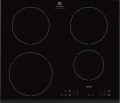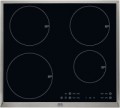—
Boil detection. A system based on a sensor that monitors the state of the product being cooked (usually by the temperature of the dishes): before the water boils, the burner operates at maximum, and after boiling, the sensor reduces the intensity of work to a certain value. The point of this adjustment is that much less heat is needed to maintain the boil than to heat it up to the boiling point; moreover, if you do not reduce the heat, the liquid can spill. Accordingly, automatic boiling allows not only to save energy but also to avoid such troubles. This function is found in electric models (see Product type).
—
Keep warm function. The keep warm function keeps food warm until served. It will come in handy in cases where dinner is already cooked and the guests have not yet arrived. The maximum time for keeping heat usually does not exceed 1-2 hours.
—
Melting. Special mode for low-temperature thawing of small portions of frozen food, melting butter or chocolate. The function allows you to carefully melt the necessary ingredients into a mass of a homogeneous structure without fear that they will burn or overheat.
—
Auto fry function. The pre-set automatic frying mode, which ensures that the temperature of the bottom of the dishes is maintained at the optimum temperature, preventing it from cooling down or over
...heating. An auto fry programme usually provides several cooking modes for different tasks.
— Additional. Several specific auto-programmes used in individual hobs and not covered by the list above.
The presence of a metal
frame in the design of the hob. Such a frame can be located both around the entire perimeter of the device (in most classic models) and only on one side (usually in domino hobs, see "Design" for more details). The frame plays an aesthetic role, allowing you to optimally fit the hob into the overall design of the kitchen. However, it can also perform a very practical function: to retain liquids spilt onto the surface. On the other hand, such protection also has disadvantages: it can be quite difficult to clean dirt near the frame, and the liquid retained on the hob can burn, making cleaning even more difficult. So in terms of cleaning,
models without a frame are more convenient.
General dimensions of the device in width and depth. Depth, in this case, refers to the distance from the leading edge to the trailing edge (when viewed from the user's side). Note that the external dimensions of the hobs are often larger than the dimensions for embedding (see below).

